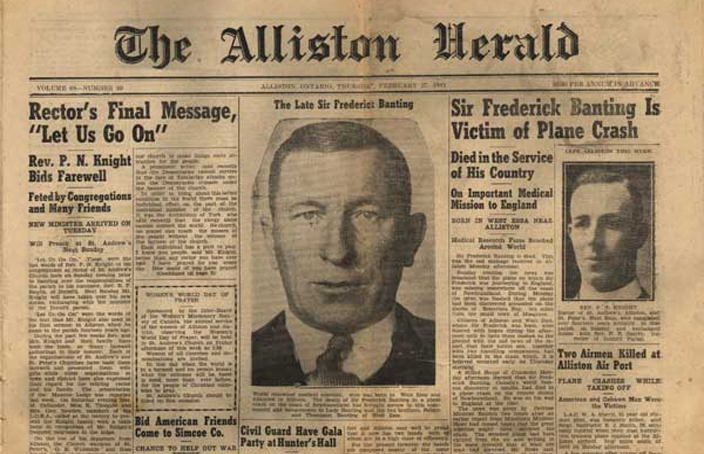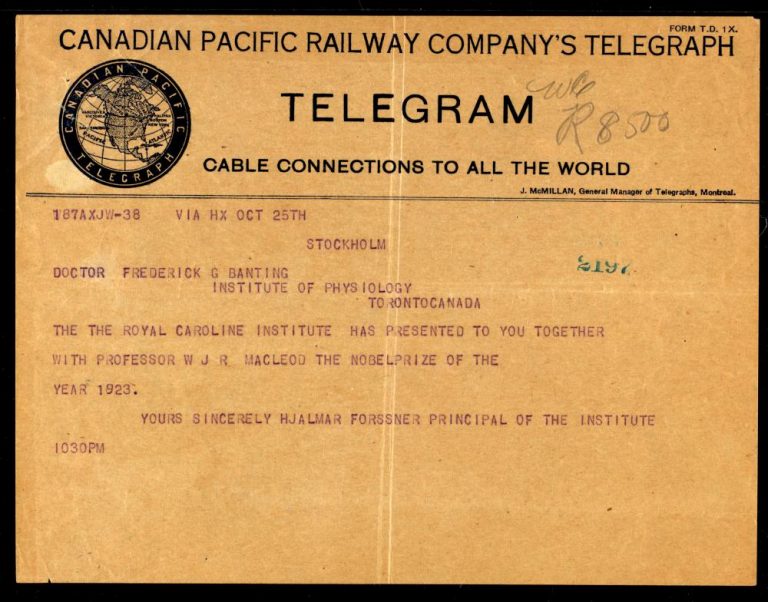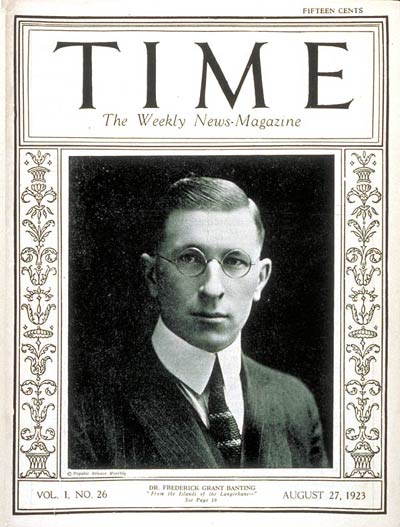Canadian physician and physiologist Sir Frederick Bunting was one of the discoverers of insulin, which saved the lives of tens of millions of people. The scientist won the Nobel Prize (jointly with John McLeod) for his discovery in 1923.
The year before this event. In January 1922, a young doctor saved a life for the first time in history by injecting insulin into a 14-year-old boy suffering from a severe form of diabetes. In recognition of Sir Bunting's achievements, World Diabetes Day is celebrated on his birthday, 14 November.



Nobel Prize for saving lives.
Frederick Grant Bunting was born on 14 November 1891 in the village of Alliston, Ontario, Canada.
He was the youngest of five children in the family of William Thompson Bunting and Margaret Grant. He received his education at Alliston School, then went to the University of Toronto to study theology, but soon turned to medicine. He received a Bachelor of Medicine in 1916, after which he joined the Canadian Medical Service and served during the First World War in France.
He was wounded at the Battle of Cambra in 1918 and was awarded the Military Cross for heroism in 1919.
After the war, in 1919, the inventor of insulin returned to Canada and practised medicine for a while.
He studied orthopaedics and worked as a surgeon at the hospital for sick children in Toronto from 1919-1920. From 1920 to 1921 he taught at the University of Western Ontario in London.
In addition to his main activity, from 1921 to 1922 Frederick lectured on pharmacology at the University of Toronto.
In 1922 he was awarded the degree of Doctor of Medicine and a gold medal.
Soon, however, this great physician became deeply interested in diabetes. The work of Opie, Schaefer, Minkowski and others showed that the disease could arise from a deficiency of a peptide hormone secreted by the pancreatic islets of Langerhans. This hormone was called insulin, and it was thought to regulate glucose metabolism, and hence its deficiency leads to the accumulation of glucose in the blood and excretion in the urine.

Frederick Bunting, saving lives
The doctor discussed this issue with various scientists, including John McLeod, Professor of Physiology at the University of Toronto. McLeod and Banting were allowed to use the premises for experimental work, along with a student assistant, Charles Best.
Frederick was a very sensitive man and always emphasised his assistant Charles Best's contribution to the discovery of the cure. He even gave him half of his share of the Nobel Prize. Furthermore, understanding the importance of insulin to mankind, Bunting refused to register a patent for it, even though the discovery would have made him a billionaire. He transferred all rights to his discovery to the University of Toronto for one dollar.
Bunting served as a communications officer during the Second World War and was tragically killed in a plane crash in 1941. Today, an eternal flame burns near the house where the Nobel laureate lived - "flame of hope". It will only disappear when people learn how to cure diabetes completely.
There are many lies, deceptions, betrayals and deceit in the human world. Sometimes it seems that all people are just defective products that God was disappointed in and threw down the toilet. Thinking that maybe they will survive. But as long as such people exist, there is hope. There is hope that mankind will not destroy itself. As a rule, these people sacrifice themselves so that other millions of ungrateful people would enjoy fruits of sacrifice they brought without thinking about it. That is why it is so important to know those people and remember that they have sacrificed their comfort and their life so that YOU may live. So live it, worthy.

 and then
and then 
